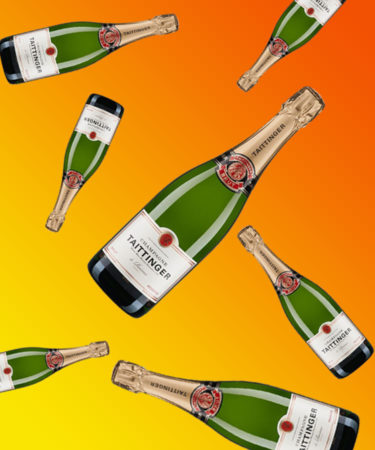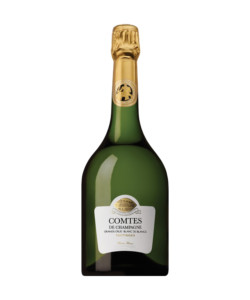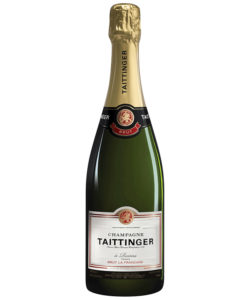Taittinger’s non-vintage brut Champagne is a refreshing, fruit-driven bottle of bubbles. You’ve no doubt come across it in your local wine store, given that the Champagne house is one of the region’s largest producers.
You may, however, be less familiar with the proper pronunciation of the brand’s name. Or, it may come as a surprise to learn that Benedictine monks planted some of its original vineyards. Here are 10 more things you should know about Champagne Taittinger.
It’s nearly 300 years old.
In 1734, a wealthy textile merchant named Jacques Fourneaux founded a Champagne house named Forest-Fourneaux. He worked with Benedictine monks — at the time, the owners of the region’s finest vineyards — to learn how to produce sparkling wine.
By the 1930s, however, Forest-Fourneaux hit hard times, with Prohibition, the Great Depression, and the First World War negatively affecting exports.
In 1932, a wine merchant named Pierre Taittinger acquired the estate and relaunched it under his family name. Part of the sale included the opulent 18th-century Château de la Marquetterie as well as the monks’ original vineyards.
Pierre Taittinger was a French war hero.
Pierre Taittinger’s first visit to Champagne came while serving in the French army. After sustaining combat injuries, the young officer was transferred to Château de la Marquetterie, which was being used as a French command post at the time. During the stay, Taittinger promised himself that, if the opportunity ever arose, he would one day purchase the grand estate for his family.
In recognition of his First World War service, Taittinger received the Légion d’honneur (Legion of Honour), the French military’s highest order of merit.
Taittinger is one of Champagne’s Grandes Marques.
In the decades following the acquisition of Forest-Fourneaux, Taittinger established itself as one of the region’s preeminent houses and a leading Champagne brand. In the 1950s, it joined the Union des Maisons de Champagne, a syndicate of Champagne houses (also known as the Grand Marques) that includes the likes of Bollinger, Laurent Perrier, Moët & Chandon, and Louis Roederer.
You’ve likely been pronouncing its name all wrong.
In English-speaking countries, we usually refer to the famous Champagne house as Tat-in-ger. To pronounce the estate’s name with French flair, however, use the local pronunciation: Tet-ahn–zhay.
Taittinger is one of Champagne’s largest producers.
Of the 300 million bottles of Champagne produced annually, Taittinger accounts for somewhere between 5 and 6 million of them, placing it in the top five houses by production size.
The house blend is fruity, floral, and Chardonnay-driven.
Taittinger’s leading label is its non-vintage Brut Reserve, a blend that typically contains 40 percent Chardonnay, 35 percent Pinot Noir, and 25 percent Pinot Meunier. The resulting wine is fresh and delicate, with fruit and bready notes.
In the best vintages, Taittinger also produces a Comtes de Champagne prestige cuvée. The 100 percent Chardonnay grapes for this release come exclusively from grand cru vineyards, while the must comes exclusively from the grapes’ first pressing. Complex, elegant Comtes de Champagne is capable of aging for decades.
Taittinger also produces rosé wines, both in non-vintage and Comtes de Champagne forms.
Its special wines age in a very special location.
Taittinger ages its Comtes de Champagne and Comtes de Champagne Rosé wines in crayères, a 2.5-mile underground network of chalk caves. Originally dug by the Romans, the caves provide the perfect conditions for cellaring wine. Taittinger is one of just five Champagne houses that age their wines in this way.
Taittinger, not Bollinger, is James Bond’s favorite Champagne.
While fans of the James Bond movie franchise might associate the British spy with Bollinger, in the original Ian Fleming novels Bond drank Taittinger. In “Casino Royale,” the first in Fleming’s series, Bond describes Taittinger as “probably the finest Champagne in the world.”
Taittinger has overseas ambitions.
In 1987, Taittinger partnered with American distributor Kobrand to purchase 140 acres of land in California. The goal was to create a high-quality American sparkling wine, and so the company, then headed by Pierre’s son Claude, chose Carneros, one of Napa’s cooler sub-regions, as its ideal location. They called the joint venture Domaine Carneros.
Thirty years larger, Taittinger took its first steps into English sparkling wine and planted its first vines in Kent, in the southeast of the country. The first bottles from the venture, named Domaine Evremond, will go on sale in 2023.
Taittinger grows many of its own grapes.
It’s common practice for Champagne houses to buy, rather than grow, the majority of the grapes used in their production. With more than 700 acres of vines, however, Taittinger is one of the region’s largest vineyard owners. Despite those extensive plantings, Taittinger also buys up to 50 percent of the grapes it uses to supply its substantial output.


